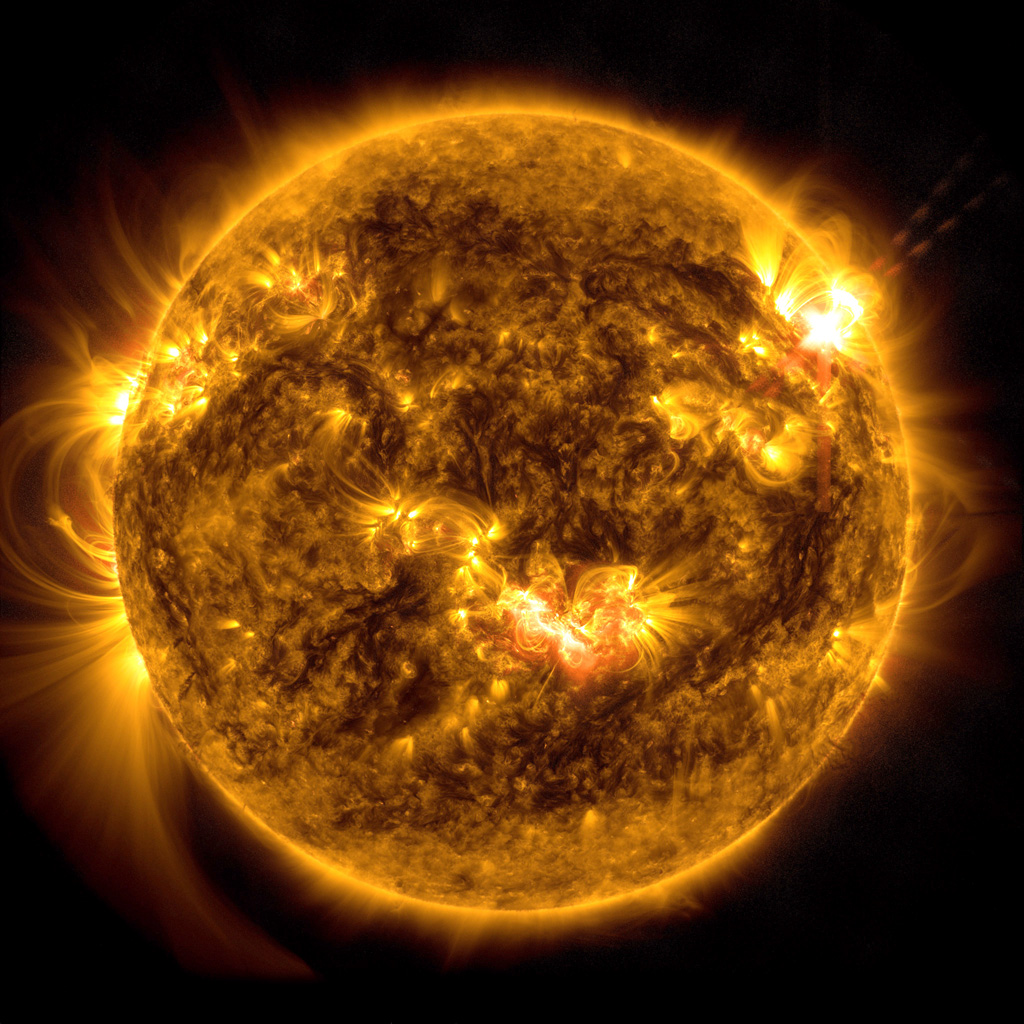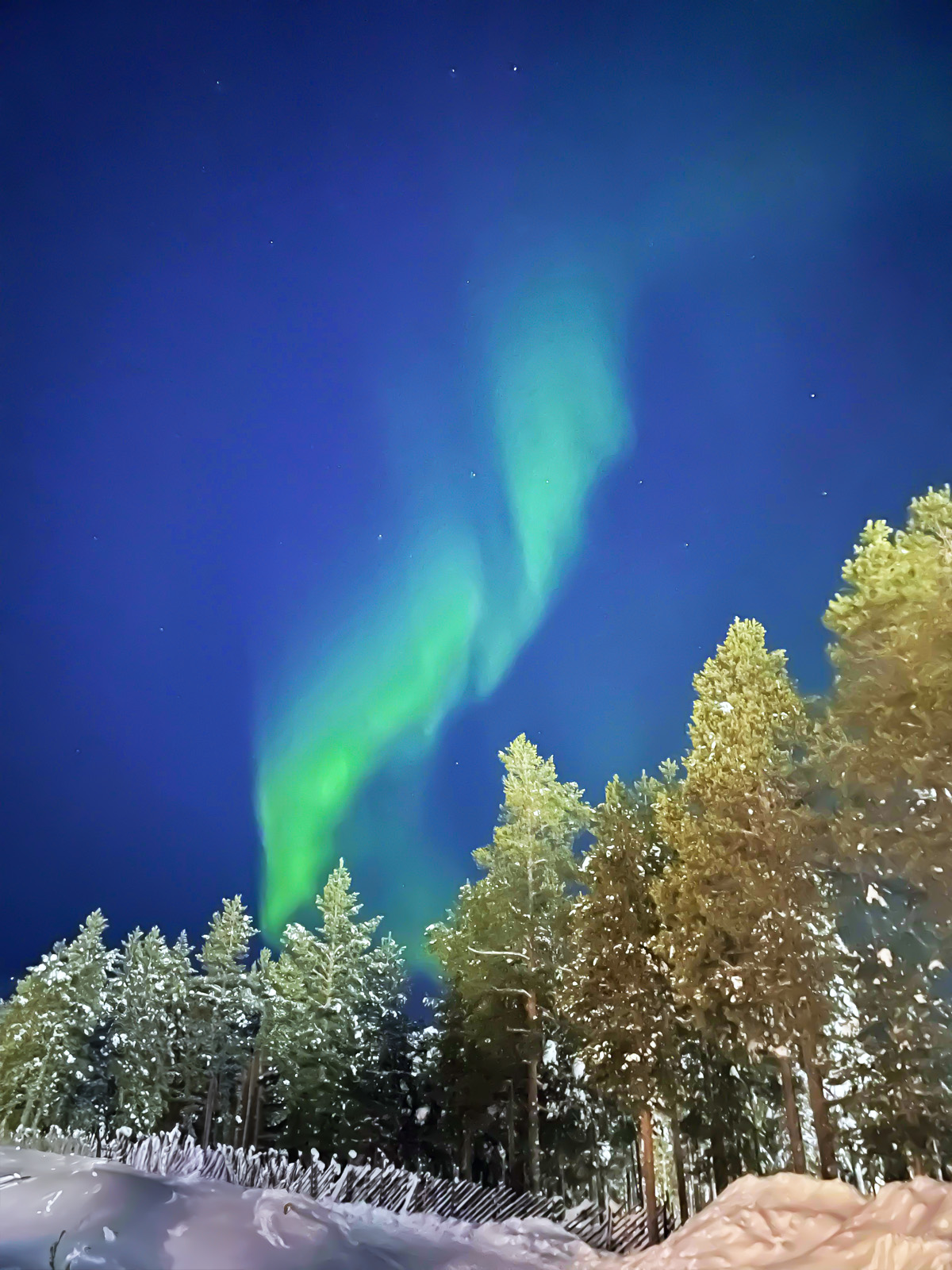Solar Flares
Solar Flares and Coronal Mass Ejections: Explosions from the Sun
Solar flares are massive explosions of energy from the Sun, millions of times more powerful than a hydrogen bomb! These flares produce intense heat and light, occurring when energy trapped within the Sun suddenly escapes.
Coronal Mass Ejections (CMEs) are another type of solar explosion but are different from solar flares. While solar flares are like quick flashes, CMEs are more like giant bubbles or clouds of gas and magnetic energy that burst from the Sun. Sometimes, solar flares and CMEs happen together, but they each have their own effects on Earth.

Solar flares and Coronal Mass Ejections (CMEs) both begin with sunspots. Sunspots are dark patches on the Sun’s surface caused by intense magnetic activity. These spots are cooler than the rest of the Sun because they block some of its heat. As the Sun’s trapped energy builds up around sunspots, it eventually bursts out, creating a solar flare. Think of it as the Sun letting out a big, energetic belch! This belch is so powerful that the energy from it can take just minutes to travel from the Sun to Earth - that's a journey of 150 million kilometres (93 million miles).
CMEs, on the other hand, come from the Sun’s corona - a layer of hot gas (plasma) that surrounds the Sun. When a CME occurs, it hurls a huge bubble of this plasma into space. You could say it’s like the Sun letting out a giant fart, but don’t worry, it’s not as smelly! They seep their way across the Solar System, carried by the Solar Wind, and can take up to three days to reach Earth.
The Sun has an 11-year activity cycle. During the quiet phase (solar minimum), there are few sunspots, and solar flares and CMEs are rare. But during the active phase (solar maximum), the Sun gets busy, belching and farting out flares and CMEs aplenty!
Sun Rays and the Solar Wind
The Sun constantly produces radiation which travels outwards across the Solar System. Heat and light are types of radiation that you can see and feel on Earth. But the Sun also sends out other types of radiation, like ultraviolet (UV) rays, which can be harmful if you're exposed to too much. Thankfully, Earth’s atmosphere acts like a shield and blocks most of these dangerous rays.
The Sun also sends out a stream of particles called the solar wind. This wind flows through the Solar System, coming from the Sun’s corona. Over time, it could strip away a planet’s atmosphere. However Earth has a magnetic field which is like an invisible force field that surrounds the planet. It repels most of the solar wind's particles and protects Earth's atmosphere from damage.
When solar flares and CMEs reach Earth, they can cause a variety of disruptions. Solar flares send bursts of energy that can reach Earth in minutes, potentially interfering with radio, TV, and phone signals by affecting the atmosphere’s ability to transmit radio waves. CMEs, which take up to three days to arrive, carry magnetic particles that can slip past Earth’s magnetic field, especially near the poles. This can lead to more severe disruptions, like problems with satellites, power grids, and even large-scale power outages, as happened in Quebec in 1989. Especially strong disturbancies of Earth's magnetic field by CMEs is known as a geomagnetic storm.
Despite these disruptions, solar flares and CMEs aren’t usually dangerous to people. Astronomers monitor the Sun closely to predict when these events might occur so they can be prepared.


One of the coolest things about CMEs is that they can create auroras — beautiful light displays in the sky. When the charged particles from a CME hit gases in Earth’s atmosphere, they cause the gases to glow, lighting up the sky in shimmering colors.
In the Northern Hemisphere, these lights are called the Aurora Borealis, or Northern lights. In the Southern Hemisphere, they’re known as the Aurora Australis, or Southern Lights. The closer you are to the poles, the more likely you are to see them.
The colours in an aurora depend on the gases the particles interact with. Earth’s atmosphere is mostly made up of nitrogen (78%) and oxygen (21%). Nitrogen glows red, violet, and blue, while oxygen shines in green and yellow.
Difference Between Solar Flares and CMEs
To learn more about how solar flares and CMEs differ, check out this NASA video: NASA Video on Solar Flares vs. CMEs





